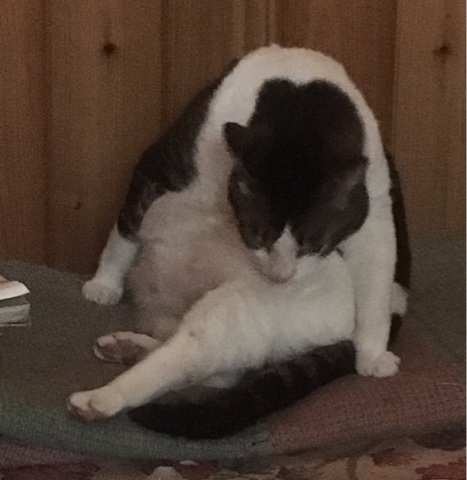"J" asked a few questions, including....
"Are there things that you can't grow in Hawaii but wanted to/miss?" "Are there things that you can grow there that you're really happy you can grow now!"
What I miss....
...crispy Melrose apples. But happily there are a couple of low chill varieties that I can, and actually do, grow on the farm. So I'm not totally devoid of homegrown apples.
...stone fruits. Where the farm is located is too warm for most of them. I can grow a small (golf ball size) peach, but that's it. I really miss those plums, cherries, and peaches.
...blueberries and cane berries. The low chill varieties don't survive here for long because of diseases. Once upon a time I was a big eater of blueberries and fresh raspberries. No more, sigh.
...tree nuts. No walnuts, pecans, hazelnuts, etc. But I've been introduced to macadamia nuts, which grow great here. I have seven macnut trees on the farm, enough to satisfy my homegrown nut cravings.
...summer squash. Not that it won't grow here, but it succumbs to diseases easily. It's been a real challenge to grow. In the greenhouses I'm getting a few zucchini squash, but so far nothing else on a reliable basis. I still need to work on this. Gee, back in NJ the summer squashes were aggressive growers and as simple as pie to grow! But that's not the case here. But as an easy substitute, I grow pipinolas.
...winter squash. A few varieties resist the fruit flies here, but most don't without special assistance. Mildew and squash borers are real major problems. And fruit flies and pickle worm aggressively attack the fruits.
...melons. Cantaloupes just won't make it here due to multiple diseases and bugs if they don't have a protected environment and ongoing chemical applications. Watermelons are one of those challenging crops due to suspectibility to mildew and fruit flies. I've grown it, but it's difficult.
In the non-edible category, I sure do miss the flowering bulbs....snowdrops, crocus, hyacinths, daffodil, tulips, grape hyacinths, etc. And many flowering plants that require a cold spell -- dogwoods, witch hazel, lilacs, forcythia, azalea. It's the lilacs that I miss the most.
What I've gained.....
...several tropical fruits : bananas, guava, papaya, pineapples, loquat, citrus (lime, lemon, orange, tangelo, tangerine, grapefruit, pomelo, finger lime). There is nothing like home ripened fruits. I've become a fruit snob and no longer wish to eat store bought bananas, citrus, or pineapples.
...non-fruit edibles : coffee, turmeric, ginger, pipinolas, jicama, allspice, cinnamon, clove
...tropical plants.
Still there are things that won't grow on the farm that I wish I could...
Breadfruit, mango, rambutan, lychee.
All in all, I'd say that I'm on the plus side for being able to grow things now. And thinking it over, the two things I miss the most from my pre-Hawaii gardens are the spring blooming lilacs and the smell of autumn leaves. Several years ago I had a friend send me a box of autumn leaves, which I have treasured. But they have lost their smell over time. But their faint hint of autumn still sets my heart sailing with pleasure.






























